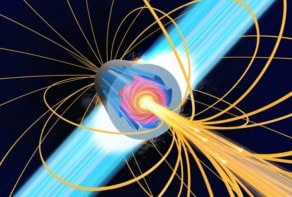These are exciting times for laser fusion. In the next couple of years, the US National Ignition Facility (NIF) should reach “ignition” – the point at which a fusion device starts to kick out more energy than it takes in. But what happens after that? After all, releasing the energy of the stars is one thing; releasing it in a form that could actually turn on some lights is another.
One project that aims to bridge this gap is called the European High Power Laser Energy Research Project – HiPER for short – and it’s the subject of Physics World‘s latest video feature. In the first video, HiPER director Mike Dunne describes how the project will work, and outlines some of the technological hurdles that need to be overcome to transform laser fusion into a practical power source.
When he’s not co-ordinating the efforts of researchers at HiPER’s 26 member institutions, Dunne is also head of the UK’s Central Laser Facility (CLF) in Oxfordshire. The CLF is home to a number of lasers – including Vulcan, one of the highest-intensity lasers in the world – that provide possible templates for the high-power, high-repetition-rate system that HiPER will need. For a view of what it’s like to work on these giant lasers, tune in to our interview with fusion scientist (and Vulcan laser user) Kate Lancaster, as she talks about the basic physics research taking place there.


